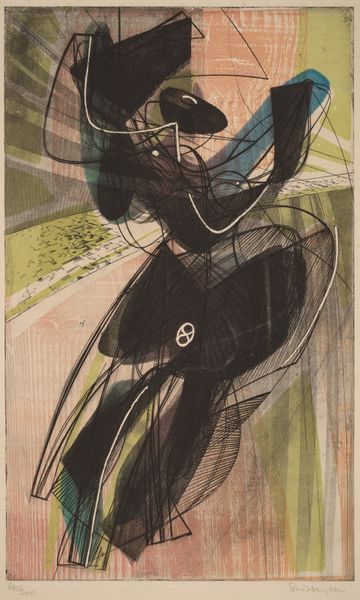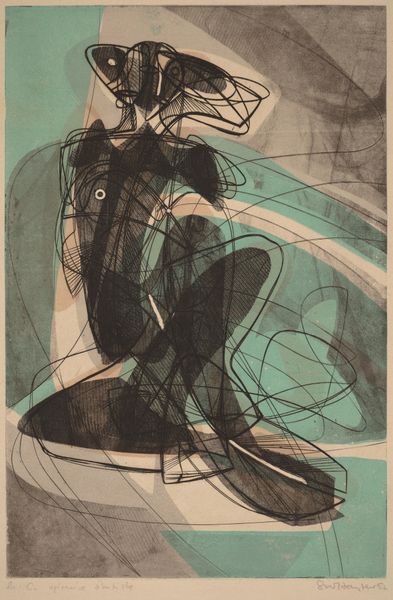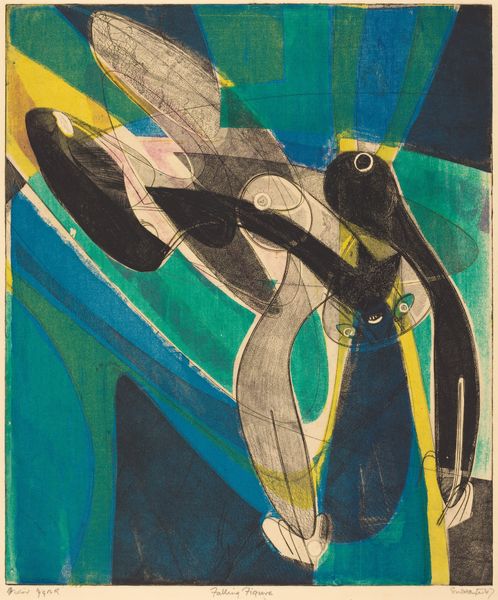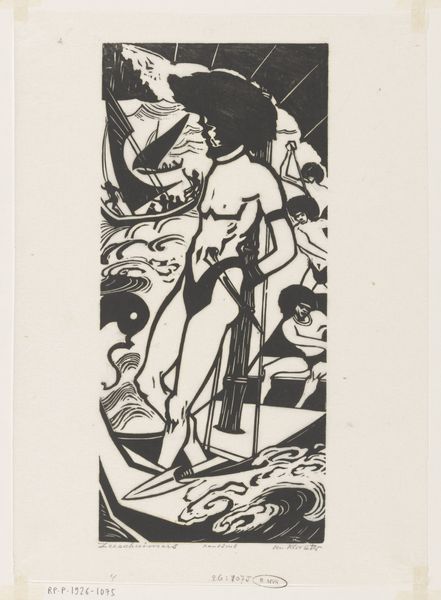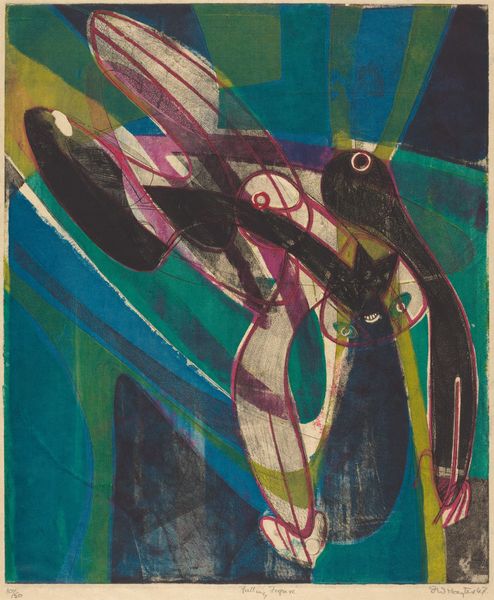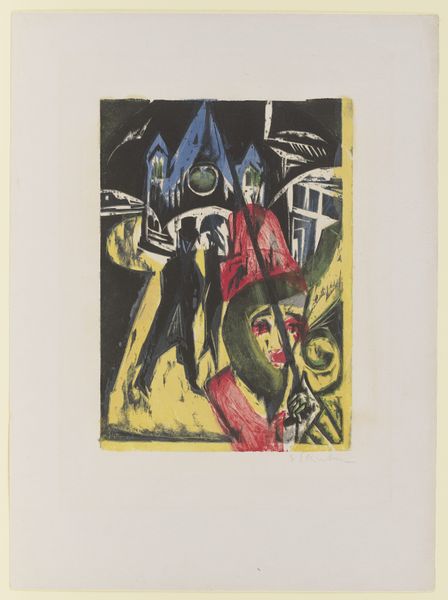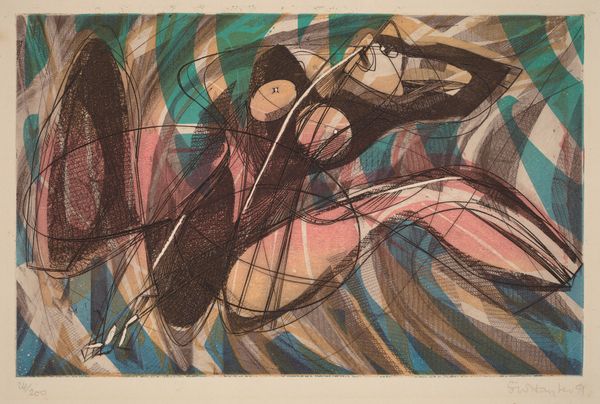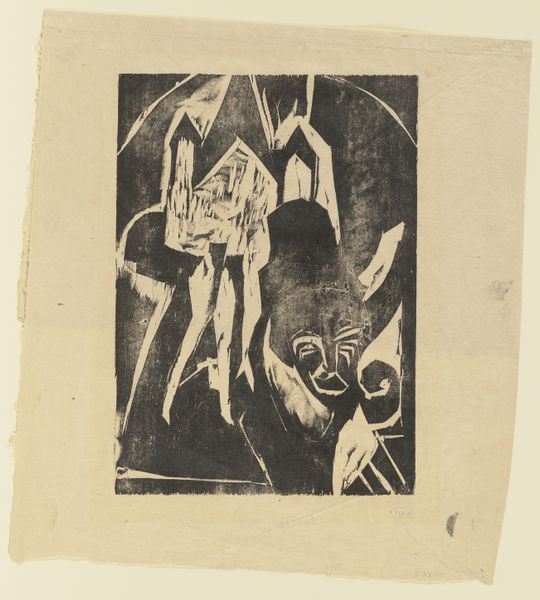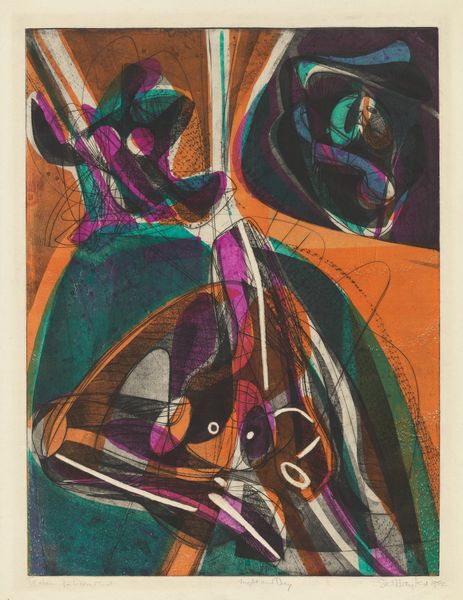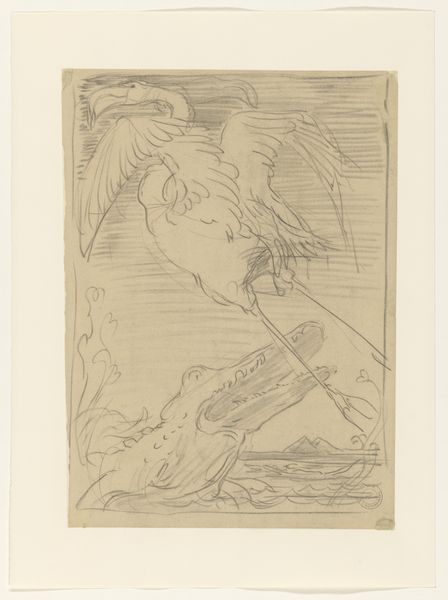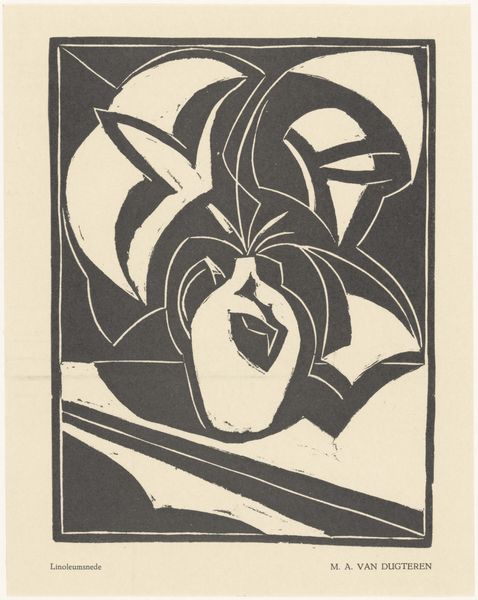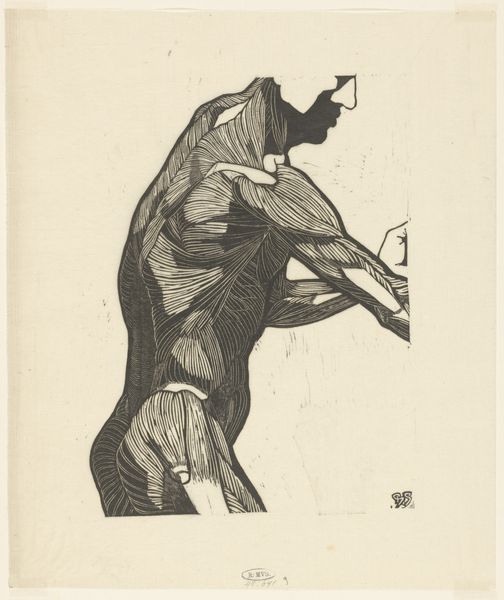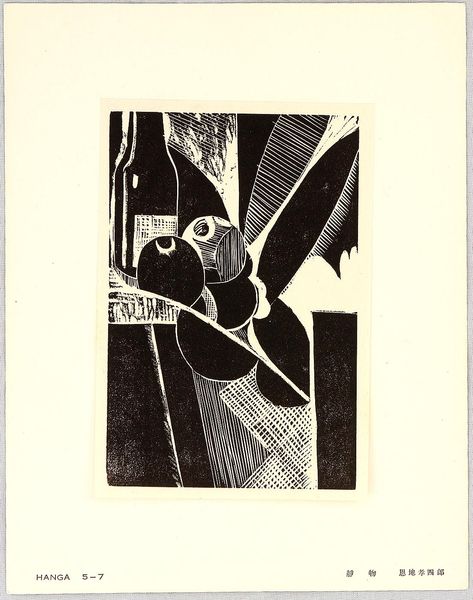
Dimensions: height 386 mm, width 239 mm
Copyright: Rijks Museum: Open Domain
Editor: We’re looking at Stanley William Hayter’s "Abstracte compositie," a linocut print dating between 1911 and 1951. I'm struck by its energy; the layering of geometric shapes and lines creates a real sense of movement, almost chaotic. What do you make of the composition? Curator: Indeed, the dynamism is quite compelling. Consider the interplay between the sharp, angular forms and the more fluid, calligraphic lines. Observe how the artist utilises line – not merely as contour, but as a primary structural element. How does this strategic juxtaposition impact your perception of depth within the two-dimensional plane? Editor: I hadn’t really thought about it that way, but now that you mention it, the overlapping lines and shapes definitely confuse the spatial relationships. Is there a system here? Curator: The linocut print is undeniably non-representational, evading easy figurative interpretation. It presents a study of formal relations; of tension between form and formlessness. One might ponder whether the intent lies in an exploration of perception itself, rather than the portrayal of tangible objects or narratives. Semiotically, the lack of familiar references pushes us to decode solely within the artwork's internal logic. Do you agree with that statement? Editor: I see your point. The piece almost rejects traditional readings, forcing a focus on purely visual relationships. It seems very deliberate. I wonder if there’s a message here or if it is only about abstraction. Curator: Precisely. Its abstraction invites a deep inquiry into its structural underpinnings. Perhaps there’s something inherently philosophical within pure visual abstraction, what could this be? Editor: Thank you! This definitely gives me a new lens through which to view abstract works. Curator: A beneficial journey through formalism and perception!
Comments
No comments
Be the first to comment and join the conversation on the ultimate creative platform.
